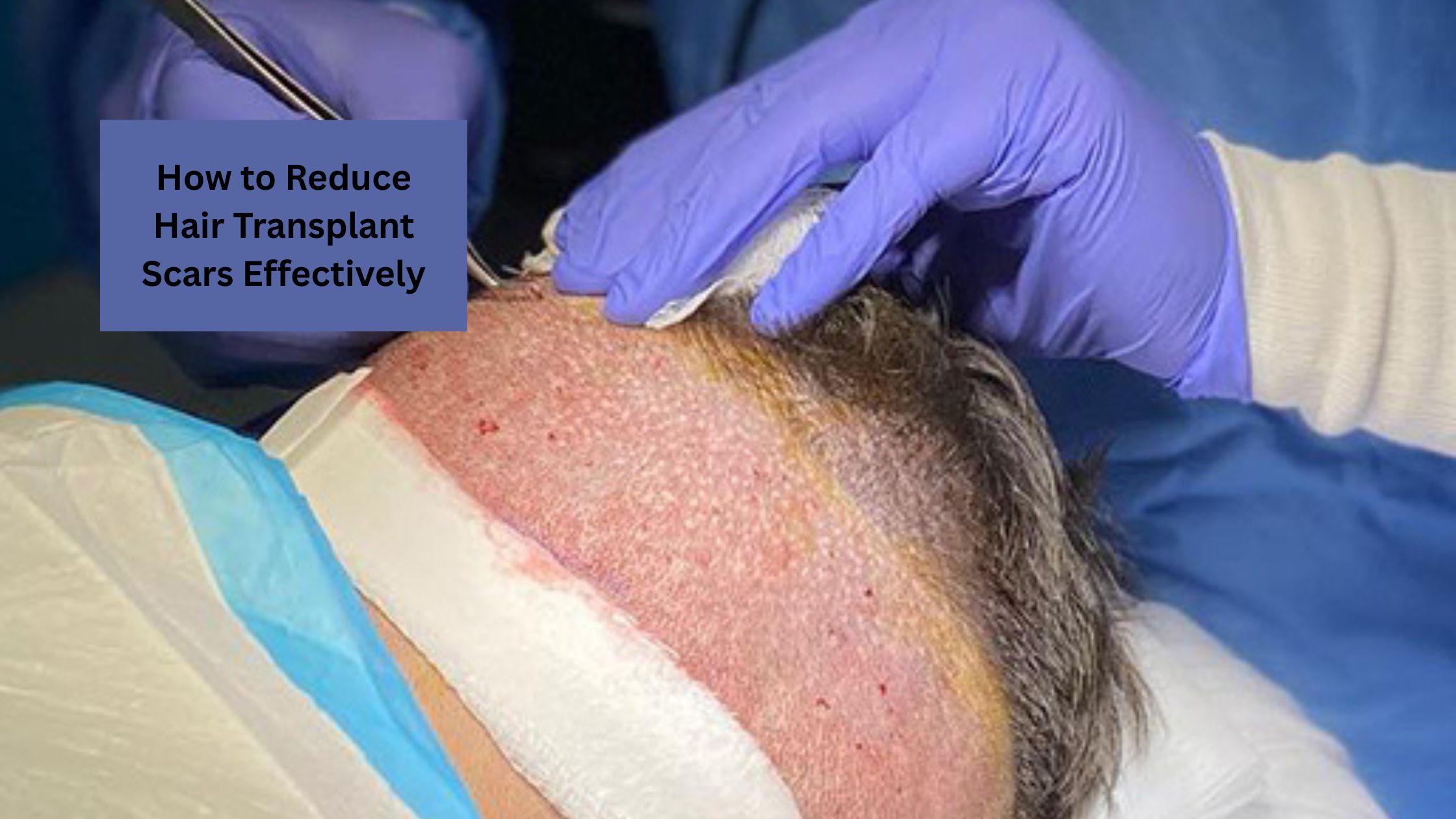How to Reduce Hair Transplant Scars Effectively

Hair transplants are a life-changing solution for individuals experiencing hair loss. While the results can be transformative, a common concern that arises after the procedure is the visibility of hair transplant scars. These scars, although often small and subtle, can impact the overall health of hair restoration. With the right approach, these marks can be minimized or even made virtually invisible. In this article, we’ll explore the causes of hair transplant scars, how to prevent them, and effective methods to minimize their appearance over time.
What Causes Hair Transplant Scarring?
Scarring after a hair transplant is a normal part of the healing process, but its extent and visibility can vary depending on several key factors. Here's a breakdown of the main causes:
Genetics
Your genetic makeup plays a significant role in how your skin heals after surgery. Some individuals are naturally more prone to:
- Thicker or raised scars (hypertrophic or keloid scarring)
- Darker pigmentation in the healing area
- Slow collagen remodelling, which affects scar texture
If you or your family members have a history of developing noticeable scars after cuts, surgeries, or piercings, you may be at higher risk for more visible hair transplant scars. Discussing this with your surgeon during the consultation allows them to take preventive measures and customize your treatment plan accordingly.
The Technique (FUE vs. FUT)
The type of hair transplant procedure used has a direct impact on the kind and appearance of scarring:
- FUE (Follicular Unit Extraction) is a modern, minimally invasive technique where individual hair follicles are extracted using a tiny punch tool. This leaves behind multiple small, dot-like scars scattered across the donor area. These scars are usually very hard to detect, especially when hair is kept at a moderate length.
- FUT (Follicular Unit Transplantation) involves removing a strip of scalp from the back of the head, followed by suturing the incision. This creates a single linear scar. While the scar can be concealed under longer hair, it may become visible with short hairstyles or if the scar stretches over time.
Choosing the right technique based on your hairstyle preferences and the desired outcome can significantly impact the final appearance of your scalp after surgery.
Surgeon Expertise
The experience and skill of your hair transplant surgeon are crucial in determining how well your scalp heals and how visible any scars will be. A skilled surgeon will:
- Use precision tools to minimize trauma during follicle extraction.
- Angle and place grafts correctly to reduce strain on the skin.
- Close FUT incisions using advanced techniques, such as trichophytic closure, which allows hair to grow through the scar line for better concealment
A well-trained, board-certified surgeon with a strong aesthetic eye can significantly reduce the risk and severity of hair transplant scars.
Scalp Health
The overall health of your scalp before the procedure also plays an important role in the healing process:
- A well-nourished scalp with good blood circulation heals more efficiently and forms less noticeable scars.
- Scalps with chronic conditions, such as dandruff, psoriasis, or infections, may take longer to heal and may develop uneven scarring.
- Hydrated and elastic skin is better able to accommodate surgical activity and recover smoothly.
Before undergoing a hair transplant, your surgeon may recommend treatments or medications to improve scalp health and ensure the best possible healing outcome.
How to Prevent Scarring After a Hair Transplant
Preventing scarring after a hair transplant is essential to achieving the most natural-looking results. While some degree of scarring is inevitable due to the nature of the procedure, there are several proven steps you can take to reduce the visibility of scars and support optimal healing significantly. Here's a detailed look at the most important measures:
Choose the Right Technique
The method of hair transplant plays a major role in the type and visibility of scarring:
- FUT (Follicular Unit Transplantation) involves removing a strip of scalp, which typically leaves a linear scar across the donor area. This scar can be visible if you wear your hair short.
- FUE (Follicular Unit Extraction) is a more advanced technique that uses a tiny punch tool to extract individual hair follicles. While FUE still leaves small dot-like scars, they are much less noticeable, especially with shorter hairstyles.
Choosing FUE performed by an experienced surgeon dramatically reduces the chances of visible scarring. It’s especially beneficial for those concerned about wearing their hair short after transplant.
Follow Aftercare Instructions Closely
Post-operative care is one of the most critical factors in minimizing scarring:
- Keep the area clean: Use a gentle, surgeon-approved cleanser to avoid infection. Dirty or inflamed wounds heal poorly and are more likely to scar.
- Use prescribed medications: Apply any topical antibiotic creams or take oral medications exactly as directed by your doctor.
- Avoid sun exposure: UV rays can darken healing wounds, leading to more noticeable scarring.
- Avoid direct water pressure: For the first few days, be cautious when washing to prevent disturbing the grafts.
Avoid Physical Irritation
Once the transplant is complete, it’s vital to protect the scalp from any form of irritation:
- Do not scratch or rub the treated area, even if you experience itching during the healing process.
- Avoid wearing hats or tight headgear in the early days unless recommended by your surgeon.
- Sleep with your head elevated to reduce swelling and avoid rubbing against pillows.
Maintain Proper Nutrition and Hydration
A healthy body heals faster and more effectively:
- Eat a balanced diet rich in vitamins and minerals. Vitamin C, zinc, and protein are especially important for wound healing.
- Stay hydrated, as water helps flush toxins and supports cell regeneration.
Limit Sun Exposure
Protecting your scalp from the sun is essential for minimizing scars:
- Wear a loose-fitting hat when outdoors to shield your scalp.
- Avoid direct sunlight for several weeks post-surgery, especially between 10 a.m. and 4 p.m., when UV radiation is strongest.
- Use a physical sunscreen (with zinc oxide or titanium dioxide) if your doctor approves it for the healing stage.
Conclusion
While some level of scarring is expected after any hair transplant, especially in the donor area, these steps can significantly reduce its visibility. Choosing the right transplant technique, being diligent with aftercare, avoiding irritation, maintaining a healthy diet, and protecting your scalp from the sun all contribute to a smoother recovery and more natural-looking results. Always consult with an experienced hair transplant specialist who prioritizes both technique and patient education. Their expertise, combined with your commitment to proper post-surgical care, is the key to preventing scarring and enjoying long-lasting confidence with your new hair.
- Art
- Causes
- Crafts
- Drinks
- Film
- Fitness
- Food
- Παιχνίδια
- Gardening
- Health
- Κεντρική Σελίδα
- Literature
- Music
- Networking
- άλλο
- Party
- Religion
- Shopping
- Sports
- Theater
- Wellness


